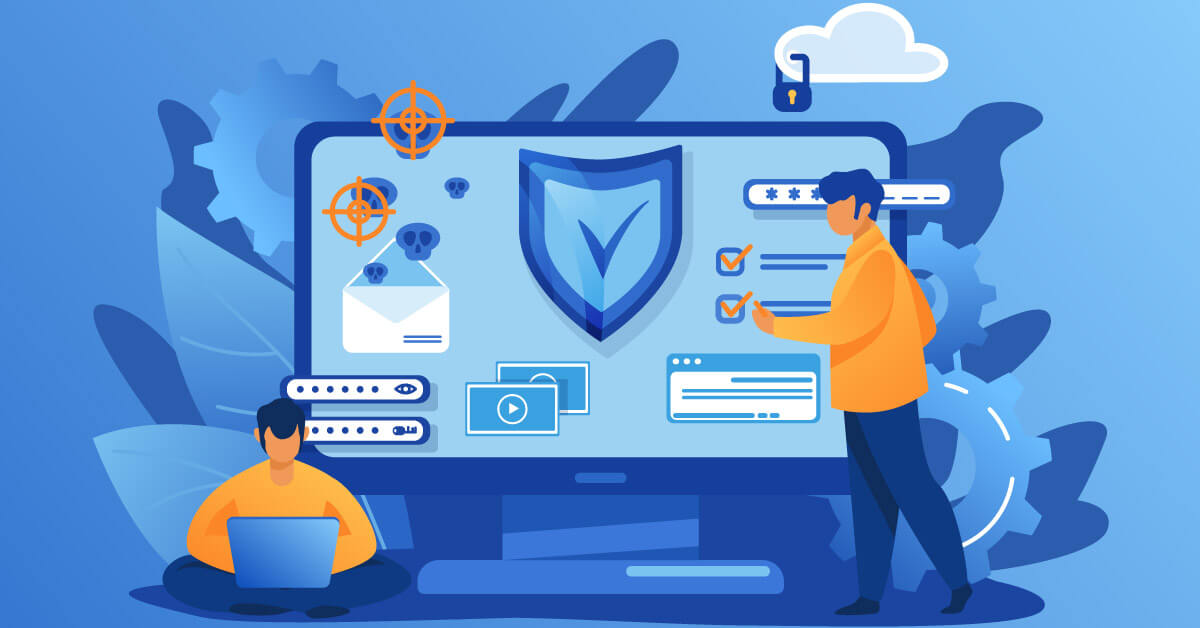Ecommerce Security and Protection Plan for Your Online Store (2023)

One of the biggest challenges that ecommerce business owners face today is dealing with security loopholes on their respective platforms. There are hundreds of forms of challenges and each of them keeps getting more complicated as the days pass and technology keeps improving.
At this juncture, you might find it worth considering what ecommerce security and protection plans can be implemented for your online shop. Here is everything you should know about ecommerce security.
Things To Keep In Mind While Conceptualizing Ecommerce Security Plan
Security threats are present in different forms and degrees. Cybercriminals carry out attacks on websites after figuring out how much confidential data they can steal by carrying out an attack.
When you devise a plan, therefore, you must assess the volume of data and what type of threats you may face on the go. Here is a list of common eCommerce security threats you might come across.
Financial Frauds
Since the very beginning of ecommerce businesses, financial frauds have been active in the arena. Fraudsters carry out unauthorized transactions on certain ecommerce websites, erase critical data, and then demand a refund from the service provider.
Bots
Normally, bots are used by search engines to crawl the web and validate if those websites or web pages can be listed in the search engine result pages. Hackers have realized that the same bots can be repurposed for leaking inventory details and pricing information from ecommerce websites.
With the help of these bots, hackers temporarily modify the pricing information of certain expensive products and get them quickly into their shopping carts and purchase them for a very low price– resulting in huge losses for the seller and the ecommerce owner.
SQL Injections
Hackers utilize SQL injections to access query submission forms and leak confidential data or all the data from those forms. After gathering what they need for their malicious purposes, they delete it altogether.
Trojan horses
At different phases of their computer use, some ecommerce website users or admins might have brought in trojan horses in their systems by themselves. Attackers use these malicious programs to transfer or tweak data from the victims’ systems or networks.
Other threats
Besides these, there are a few other ecommerce security vulnerabilities too such as DDoS attacks, Brute force attacks, XSS, phishing, and spam. In order to conceive a strong Ecommerce Security and Protection Plan for Your digital selling platform, you must have a clear understanding of all these.
That said, let’s now take a look at some of the possible solutions for the aforementioned threats. Here are a few effective solutions to incorporate into your ecommerce security and protection plan.
The following are some effective solutions you can implement on your ecommerce website as part of your ecommerce security and protection plan.
Effective Ecommerce Security for Your Online Store
Consider HTTPS and SSL certificate
If you are using an outdated HTTP protocol for your ecommerce website, you face increased risks from vulnerabilities. Switching to a HTTPS protocol will benefit you in many ways. Firstly, it guarantees the safety of data shared with you by your users. Additionally, it prevents hackers from carrying out unauthorized transactions through the payment gateways on your website.
Don’t forget to use proxies that rotate at regular intervals. Proxies provide an extra layer of security to HTTPS websites, routing your traffic through a different IP address each time a request is made. Using rotating proxies makes your ecommerce site more difficult to attack.
Moreover, if your ecommerce website runs on HTTPS protocol, it has better chances of getting ranked in search results because HTTPS is one of the ranking criteria used by the search engine giant. It is wise to install SSL certificate on the server.
In case if you do not know the type of SSL cert then, do not worry. SSL can be from reputed certificate authorities and the types include single domain, multi domain, wildcard SSL certificate. Few popular certificates are RapidSSL certificate, Thawte wildcard SSL, multi domain SSL, etc.
Firewall integration
If you have been ignoring the Windows firewall update notifications lately, be warned that you are putting yourself at greater risk. Along with the built-in Windows firewall, it is recommended to use an additional firewall software as well as a firewall plug-in for your browser for added security.
Firewalls protect you from a lot of threats. It keeps an eye on the network traffic and prevents authorized network access. Other advantages are protection from cross-site scripting and SQL injection.
Backup your important data
While implementing a security protection plan for your online store, you should not only take precautions against a possible attack but have an active recovery plan too, in case of an unexpected attack.
Keeping all your data backed up will mean you have less impact on the attack. Make use of automated data backup services so that in case you forget to back up the data one day, it will be done in the backend.
Conduct Penetration Testing
Carry out penetration testing on your ecommerce website from time to time. This will bring to your attention any vulnerability your system, server, or any related resources face. You can fix those loopholes straight away.
Provide Your Staff with Upskilling Opportunities
Unless your staff members are up to date about your ecommerce security policies and plans, they could unintentionally risk your data. Provide them with enough upskilling opportunities so that they know what to do and what not to do for the data privacy and security of the organization. By any means, they shouldn’t share any critical business data.
Educate Your Customers
Design your ecommerce website with enough instructions and warnings about the best practices. Most often, people get hacked due to weak passwords they use. If a user signs up for an account on your ecommerce website with a weak password, they must be warned to use a stronger one instead and for this, systematic and planned efforts must take place in the UX designing and writing phase.
Wrapping Up
Most of the threats and attempts to attack can be traced down easily by keeping a close watch of your web servers. There are advanced solutions that enable this, for instance, SIEM (Security Information and Event Management).
You can employ this to track your system as well as to keep a log of traffic and any suspicious activities. When any such undesired movements are brought to your attention, you can investigate if there are any loopholes and fix them right away.
To sum up, ecommerce websites need to be highly secured because they involve financial transactions and critical user information. Incorporating the best practices and solutions into your ecommerce security and plan for this year, therefore, is the right step to take going forward.









